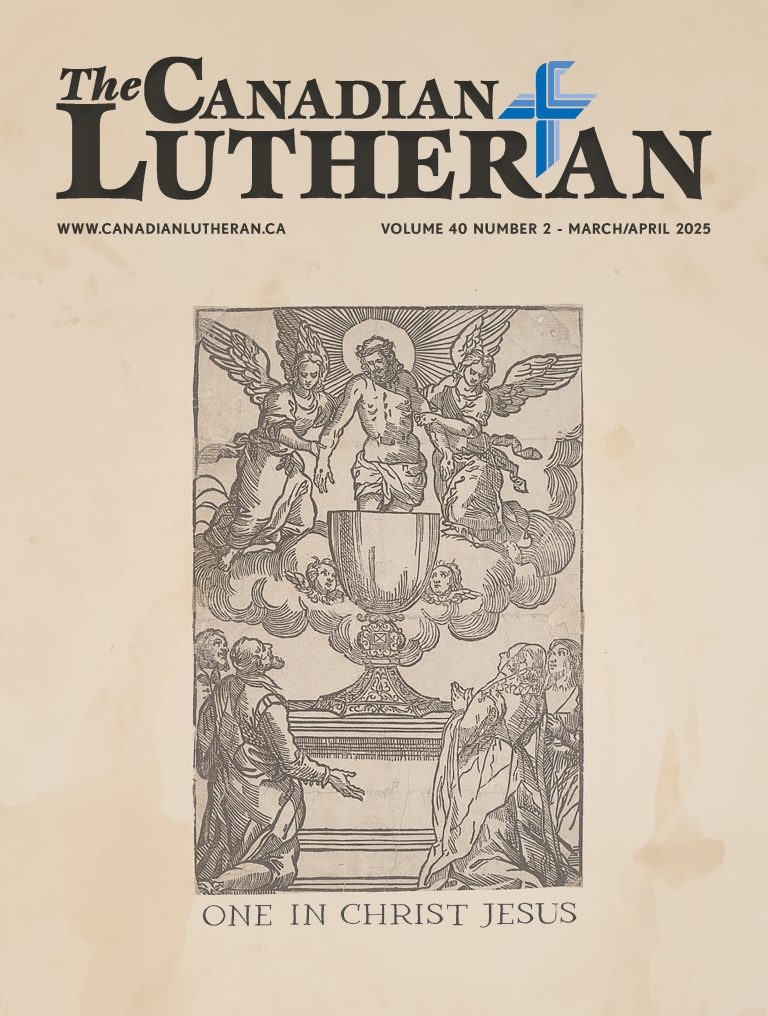Timeless Standards from a Timeless God

by Thomas Korcok
If you haven’t said it, then you have certainly heard it: “Beauty is in the eye of the beholder.” Whenever there is a disagreement over art, architecture, clothing, hairstyle, tattoos, or body piercings, it is not too long before someone solemnly utters the phrase and effectively silences all debate. The unspoken message is that judging something to be ugly is narrow-minded.
Surprisingly, the phrase first appeared in a nineteenth-century romantic novel called Molly Brawn. Indeed, from ancient times, beauty was considered one of three timeless standards. Beauty, along with truth and goodness, were the things that transcended time, location, and even culture. What was true then is true now. What is beautiful is beautiful in every place. What is good is good for all people.
Because they are universal and timeless, these standards were seen as the revelations of God’s nature. God has woven evidence of these standards into every part of creation and has instilled in people a desire for truth, goodness, and beauty so that they would seek Him out. They also lead Christians to better understand the fullness of life, giving a rich meaning and depth of purpose to our daily vocations. In a culture where we often must grit our teeth for the sake of being “open-minded,” we confess that the eternal truth, goodness, and beauty that daily surrounds us in Christ gives us a zestful appreciation for who God is, who we are, and the world that He has created.
The First Standard: Truth
With Jesus standing before him, Pilate asked “What is truth?” As a Roman student, Pilate would have learned what the great philosophers had said about truth. As a politician, he had to reconcile those ideals with the reality that, in life, truth was often compromised for the sake of political expediency. In this context, the bloodied and beaten Jesus proclaimed Himself to be a different type of politician: a king in whom all truth was made manifest. To Pilate, Jesus said, “You say that I’m a king. I was born for this, and I have come into the world for this: to testify to the truth. Everyone who is of the truth listens to My voice” (John 18:37). His bold claim is that He is truth made flesh. This incarnation of truth is so potent that it conforms people to His image. Here then is truth that loves His people and in turn makes them into lovers of the truth.
Truth is not just a matter of the functional truth of science—such as the boiling temperature of water—it is a matter of the deep questions with which everyone grapples. “Who is God?” “Who am I?” “What am I to do with my life?” “What is going to become of me after this life is over?” Those are all questions that only Truth (Christ Jesus) can answer.
The Second Standard: Goodness
The ancient understanding of goodness was much deeper than what our postmodern mind comprehends. Good, in our contemporary culture, is a matter of opinion. It is occasionally argued that, if most people agree that something is good, then it must be. For example, moral matters—such as the marriage of homosexual people—are often judged as good simply because opinion polls indicate that most people believe it to be so.
Paul said, “We know that for those who love God all things work together for good” (Romans 8:28). When he used the word “good,” he certainly wasn’t thinking in modern terms. For him, good was an objective thing that came from God. Goodness is that which enables us to fulfill our purpose in life. This has very real implications for our lives. For example, what constitutes a good life or good government? What makes for good children, husbands, or wives? What is a good job or a good use of money? These are much more difficult questions that every Christian, at some point in his or her life, must face. To answer them, we can’t just look at our own desires—even though we are so often told “whatever you choose is good as long as it is authentic to you”—because our sinful nature will tilt us away from good and toward evil, and will probably get it wrong.
The Third Standard: Beauty
St. Augustine (354-430 A.D.) taught that God wove beauty into every part of creation. He wrote, “Every creature has a special beauty proper to its nature, and when a man ponders the matter well, these creatures are a cause of intense admiration and enthusiastic praise of their all-powerful Maker.” God created man with the ability to appreciate beauty so that he would not love the base things of the world but instead look to God.
The church deliberately incorporated timeless standard of beauty into its life. The great cathedrals of Europe were shaped by the desire to connect worshippers with divine beauty. These places of sacred meditation had perfect proportions and were flooded with the light of intricately designed stained-glass windows. Beauty was anything but something found in the eye of the beholder. It was a confession of who God was and how He was manifested in the world.
The contemporary belief that beauty is subjective has effectively expelled all timeless standards from our collective consciousness. If beauty is relative, then it only stands to reason that truth and goodness are also relative—they too must lie in the eye of the beholder. If that is true, then by extension, God must also be relative. He can only be what I make of Him or how I perceive Him.
Truth, Goodness, & Beauty in daily life
Christ does not just teach us about truth, goodness, and beauty, nor does He simply lead His people to them. Through baptismal indwelling, He remakes people so that they radiate a new cruciform version of truth, goodness, and beauty in their everyday lives. On account of Christ’s work, Christians are made into true people, good people, beautiful people, who rejoice as they find those things in the world around them, recognize them as gifts from Christ, and use them to praise God and serve their neighbour.
The cruciform transcendent standards are found in the most unexpected places: the bedside of the sick, the care of the helpless, the teaching of the young, and so on. They may take the form of a well swept floor, an honest count of change, or a carefully plowed field. The world may regard these things as unimportant, lowly, or even ugly, but the Christian sees them as places where God, though masked, is present with His truth, goodness, and beauty. Luther captured this sense of richness:
Whenever you listen to a nightingale, therefore, you are listening to an excellent preacher. He exhorts you with this Gospel, not with mere simple words but with a living deed and an example. He sings all night and practically screams his lungs out (LW 21.197).
The nightingale with its simple song, offers praise to God and directs Christians to the Gospel. Such an understanding reveals the world to be an enchanted place filled with wonder and mystery. The natural and the supernatural are a unified whole in which the Triune God permeates everything and where the truth, goodness, and beauty of Christ will often show up where we least expect them.
———————
Rev. Dr. Thomas Korcok is Professor of Theology at Concordia Lutheran Theological Seminary and the author of the books Serpents in the Classroom and Lutheran Education.
Things you can do to grow in an appreciation for God’s truth, goodness, and beauty:
1. Visit an art museum or study a good piece of art online.
2. Listen to some good music.
3. Take music lessons.
4. Read a good book.
5. Learn some ancient philosophy.
6. Read Proverbs and the Psalms.
7. Watch a good science documentary.
8. Go for a walk in the woods.
9. Look for beauty in someone who is suffering.




